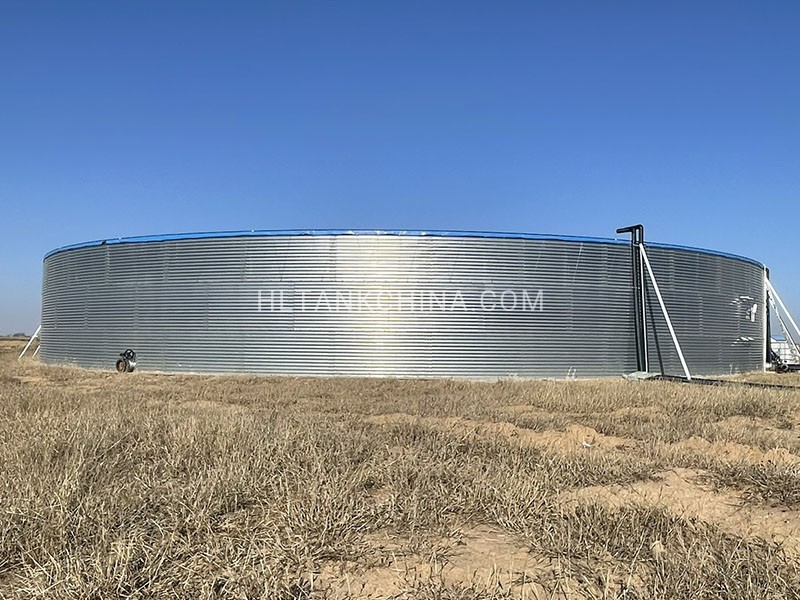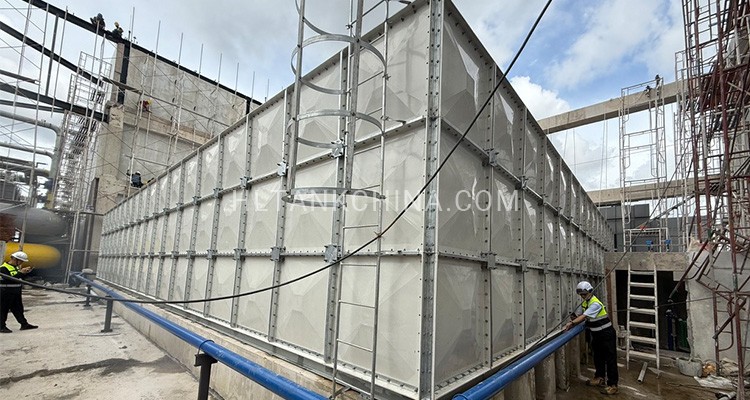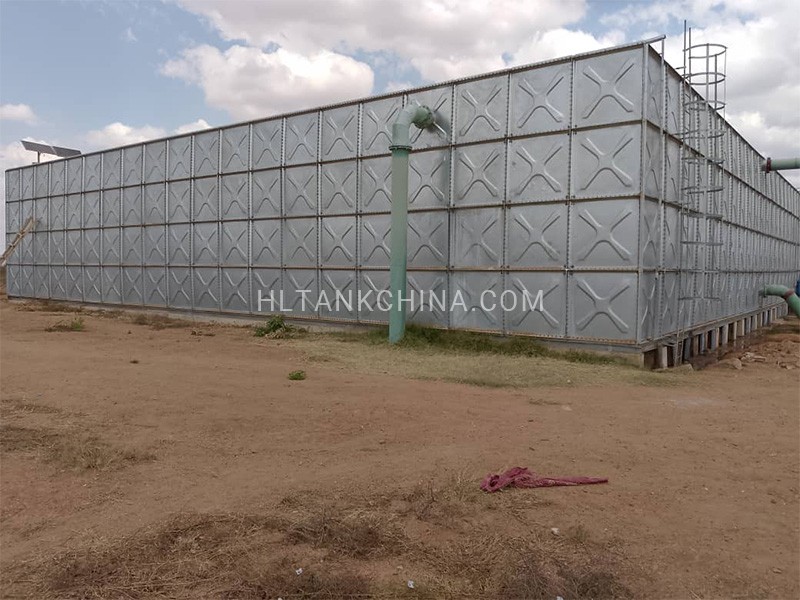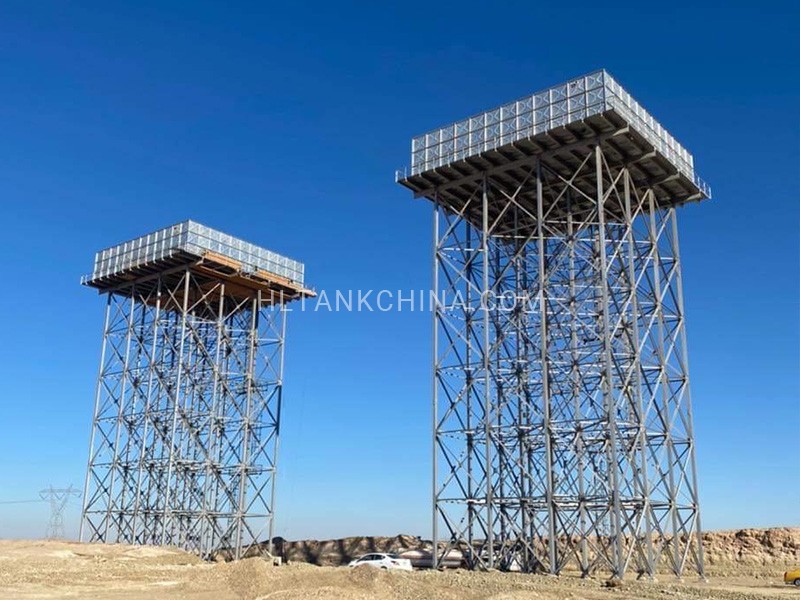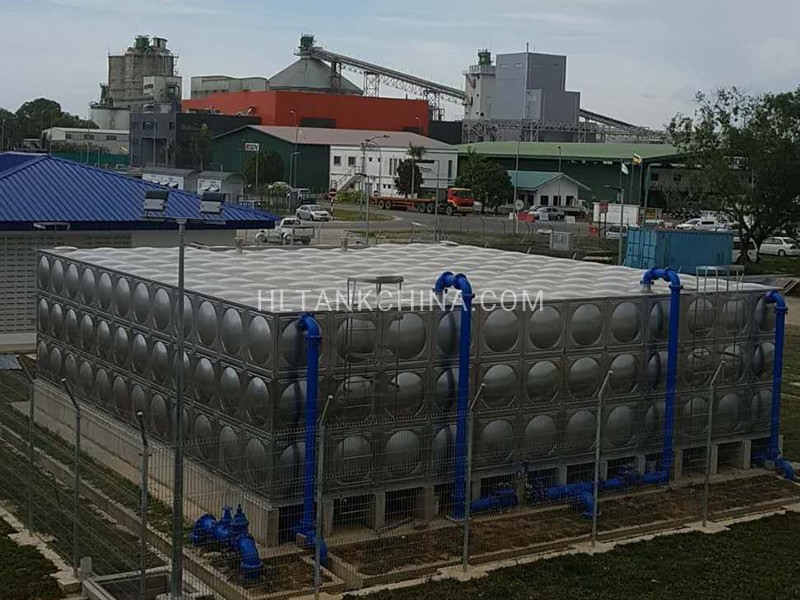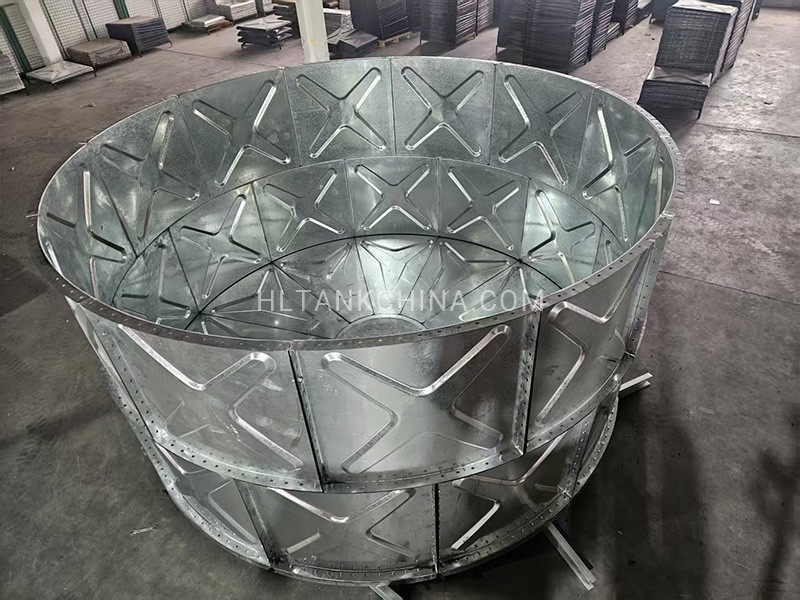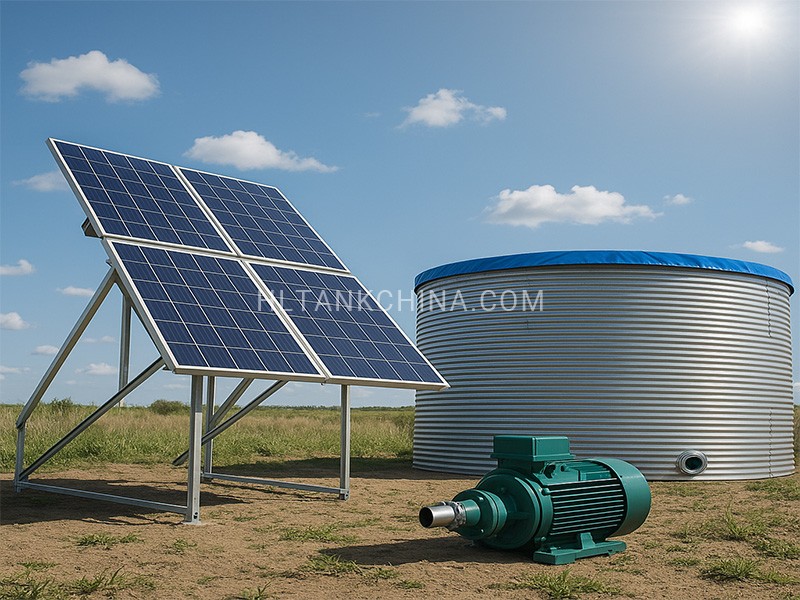

What is Agricultural Water Reservoir Solar Irrigation System?
A solar irrigation system is an energy-efficient solution designed to supply water for agricultural use using solar power.
It is ideal for farms, gardens, orchards, and remote areas where electricity is unavailable or unreliable.
The system consists of three main components including solar panels, solar pump and agricultural irrigation water tank.
Main Uses in Agriculture
Drip Irrigation
Delivers water slowly to plant roots, minimizing waste and saving water.
Sprinkler Irrigation
Suitable for vegetables, fruit trees, and open field crops.
Flood Irrigation (basic setup)
Used for rice fields or crops that require surface water application.
Greenhouse Irrigation
Reliable water supply for protected agriculture using overhead sprinklers or misters.
Livestock Watering
Ensures constant water supply in cattle farms or remote animal shelters.
How to Choose Solar Panels for an Agricultural Irrigation System?
Selecting the right solar panels is crucial to ensure stable, efficient water delivery for farms, greenhouses, orchards, and rural irrigation. Here’s a step-by-step guide:
1. Determine the Water Pump’s Power Requirements
Start by identifying your water pump’s:
Power rating (W or kW)
Operating voltage (usually 12V / 24V / 48V DC or 220V AC)
Daily water requirement and pumping hours
2. Calculate Total Solar Panel Capacity Needed
Recommended formula:
Solar panel wattage = Pump power × 1.3 to 1.5 (safety margin)
| Pump Power | Suggested Solar Power | Panel Quantity (330w Panels) |
|---|---|---|
| 220W | 350W – 400W | 1-2 panels |
| 750W | 1000W-2000W | 3-4 panels |
| 1.5KW | 2000W-2500W | 6-8 panels |
| 3KW | 4000W-5000W | 12-15 panels |
3. Choose the Type of Solar Panels
| Type | Efficiency | Cost | Recommendation |
|---|---|---|---|
| Monocrystalline | High (18–22%) | Higher | Best for small or low-sunlight areas |
| Polycrystalline | Medium (15–17%) | More affordable | Good for sunny, wide-open areas |
Monocrystalline panels are recommended for most agricultural uses due to better performance in cloudy or variable weather.
4. Consider Your System Design
| Design Type | Battery Needed | Notes |
|---|---|---|
| Direct (Daytime Use) | No | Most efficient and cost-effective |
| Hybrid (With Battery) | Optional | Allows night or cloudy-day operation |
| With MPPT Controller | Yes | Maximizes power conversion, protects the system |
5. Panel Installation Tips
Face the panels toward true south (in Northern Hemisphere) or true north (in Southern Hemisphere)
Tilt angle ≈ your local latitude
Avoid shade from trees or buildings
Mount on stable structures (steel frames, rooftops, or ground)
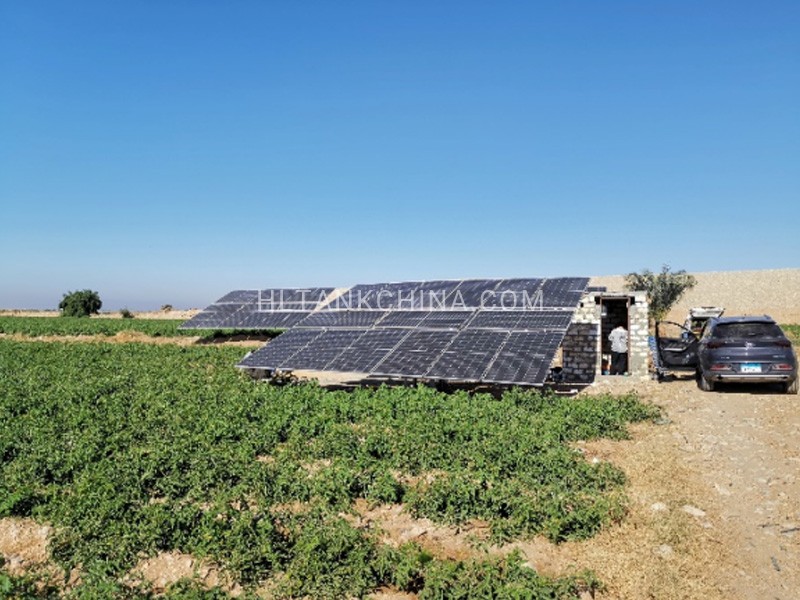

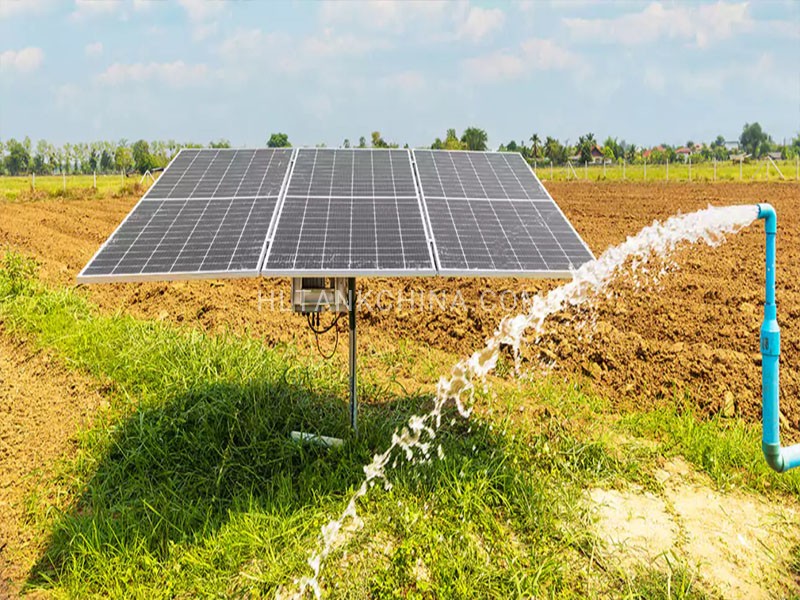
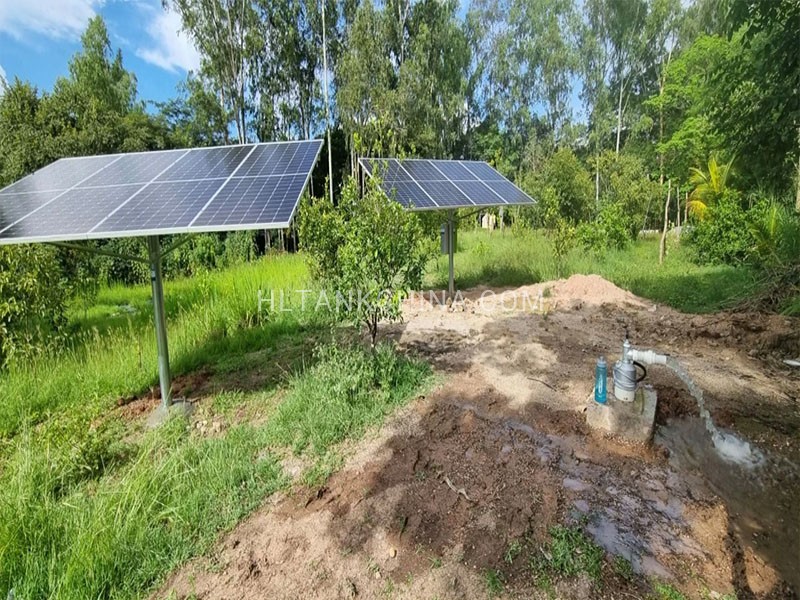
How to Choose a Solar Water Pump for Agriculture Irrigation or Livestock Water Reservoir?
1. Identify the Type of Pump You Need
| Pump Type | Description | Best For |
|---|---|---|
| Submersible Pump | Installed inside a well or borehole; pushes water up | Deep water sources (≥10m) |
| Surface Pump | Placed above ground; pulls water | Shallow sources (≤7m), tanks, ponds |
| Booster Pump | Boosts water pressure for irrigation systems | Drip/sprinkler systems |
2. Know the Required Head (Vertical Lift)
Total Dynamic Head (TDH) = Vertical height + pipe friction loss
Example: If the water depth is 40m and pipes go another 10m uphill → TDH = 50m
Choose a pump rated for at least that head (preferably with 10–20% safety margin)
3. Know the Required Flow Rate (Water Volume Needed)
Measured in liters per hour (L/h) or cubic meters per hour (m³/h)
For example:
Small farm: 1–3 m³/h
Mid-sized farm: 5–10 m³/h
Livestock drinking: 500–2000 L/day
Choose a pump that can meet this flow rate at the required head
4. Match the Pump Voltage with Your Solar System
| Pump Voltage | Use Case |
|---|---|
| 12V / 24V DC | Small pumps, portable kits |
| 48V / 72V DC | Mid-sized systems |
| 220V AC / 380V AC | Large irrigation systems with inverter/controller |
5. Ensure Compatibility with Your Solar Panels
Solar panel wattage should be 1.3–1.5 times the pump power
For example, a 750W pump → solar panel array of at least 1000–1100W
Use MPPT controller if needed for voltage regulation
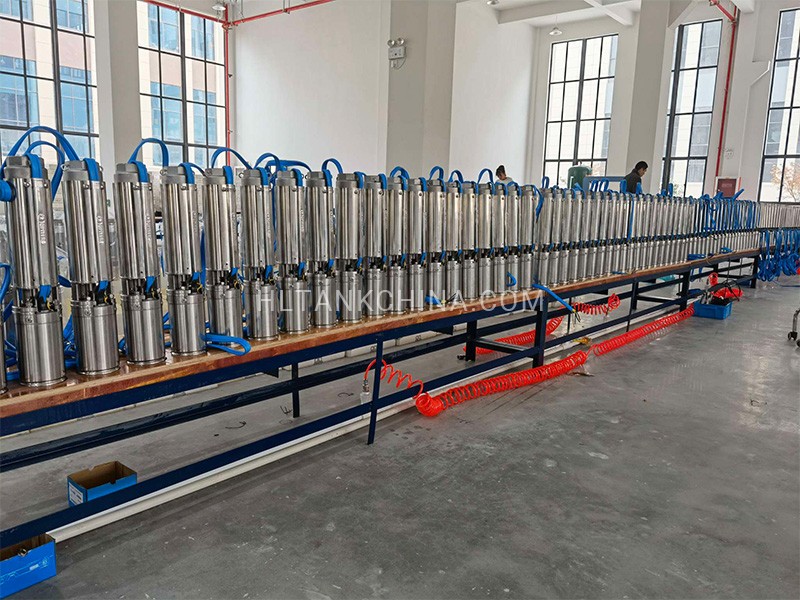

Agricultural Water Tank Irrigation or Livestock Water Tank Options
We offer a wide range of high-quality water storage solutions designed to meet the demands of agricultural irrigation and livestock watering. Our tanks are built for durability, easy installation, and compatibility with solar-powered systems and rural infrastructure.
Below are our main water tank options:
Modular tank with galvanized corrugated sheets and liner, ideal for large-capacity farm or irrigation water storage.
Lightweight, rust-proof tank made from fiberglass-reinforced panels, suitable for clean water storage in agriculture or livestock farms.
Heavy-duty bolted tank with hot-dip galvanized panels, widely used for rural irrigation, livestock, and industrial applications.
Steel tank mounted on a tower for gravity-fed irrigation or water supply in off-grid or agricultural areas.
Durable stainless steel panel tank with excellent corrosion resistance, ideal for clean water storage in hospitals, buildings, or food-grade agricultural applications.
Compact and easy-to-install round tank, designed in-house for flexible use in small farms, gardens, or auxiliary irrigation systems.
Advantages of Solar Irrigation Systems
No fuel or electricity cost – Powered entirely by solar energy.
Environmentally friendly – Reduces carbon emissions.
Works in remote/off-grid locations – Ideal for developing regions.
Easy to install and maintain – Minimal operational costs.
Customizable – System capacity can be designed based on land area, crop type, and water source depth.
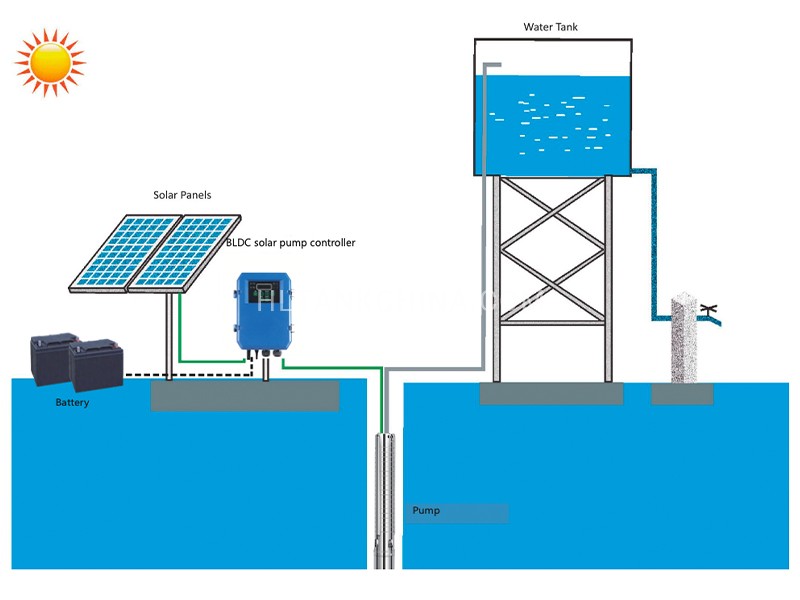
RFQ
Here are some important quick tips below. Did not find the answer for your question, drop a email to [email protected] and our dedicated staff will response within 24 hours.
Stay In Touch With Us

